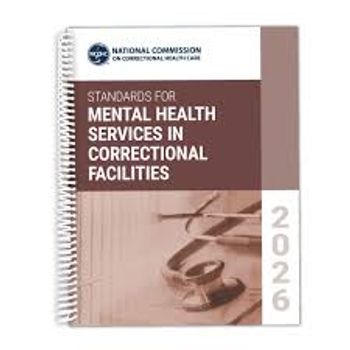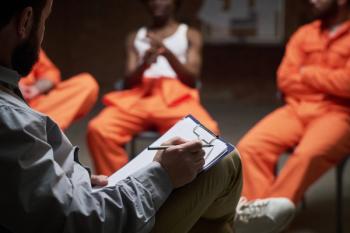
Fathers and Daughters: Custody Plans and Other Steps to Protect Their Relationships
After parents break up, why is the father-daughter relationship typically more damaged than the father-son relationship?
Dr Linda Nielsen is an expert on father-daughter relationships in the context of divorce and best custody practices. All mental health professionals who are involved in divorce and child custody cases will profit from her expertise. Her knowledge is perfect for inclusion in my Forensic Practice column. – Alan D. Blotcky, PhD
FORENSIC PRACTICE
What is it about fathers’ relationships with their daughters that leaves them more damaged than fathers’ relationships with their sons after the parents break up? More important still, how can custody laws, parenting plans, and mental health and family court professionals help protect or strengthen the father-daughter bond?
Divorce Damage: Daughters Take the Greater Hit
One of the most serious, long-lasting consequences of divorce is its negative impact on sons’ and daughters’ relationships with their fathers. This is not groundbreaking news. The research has been acknowledging this fact for decades. This damage often lasts well into the children’s adult lives, sometimes leading to such serious meltdowns that the relationship is never fully repaired. Hopefully, most mental health and family court professionals and custody law policymakers are already aware that divorced fathers’ relationships with their children are at risk.
What might come as a surprise, though, is that this father “wound” is generally worse for daughters than for sons after the parents’ breakup.1 Compared to sons, daughters are more likely to say their relationship with their dad has become distant, strained, superficial, or altogether broken. Daughters also have a greater longing for more time with their dads, feel more ignored and rejected, and are more dissatisfied with their relationship with their dad even years after the parents’ divorce. In fact, it is more common for divorced fathers and sons to rebuild or strengthen their bond after the son becomes an adult than for this to happen with daughters. Even as adults, daughters are more apt to say there is still a lot of tension and conflict with their dads—much of which stems from what happened after the parents separated. In other words, the deterioration in father-daughter relationships is not only more common, but harder to repair.
The other downside for daughters is that this father wound has such a far-reaching impact on so many aspects of their lives. In married families or divorced families, the quality of the father-daughter relationship has more impact than the mother-daughter relationship on the daughter’s romantic relationships with men, her sexual behavior as a teenager or young adult, her future divorce rate, her career choices, and her resilience in dealing with stress and adversity. The bottom line is that maximizing fathering time after the parents separate is in many ways more important for daughters than for sons.
Why the Daughters?
Why do daughters usually pay a greater price than sons in their relationships with their dads? What is going on? The answer lies in 3 general areas: the nature of mother-daughter relationships before the divorce, maternal enmeshment and role reversals, and our society’s false beliefs about fathers and daughters.1
Predivorce family dynamics: In most intact families, sons and daughters are closer to their mothers than to their fathers. This does not mean the children and their fathers love one another less. It simply means children and their moms usually share more personal information with each other, spend more one-on-one time together, and feel more comfortable talking about intimate things. Mothers and daughters are the most likely dyad in the family to have that kind of communication and closeness. This means that, when parents are separating, the stage is already set for the mother to share more personal information with her daughter than with her son. Unfortunately, mothers sometimes share damaging information about the marriage or divorce with the children—usually with their daughter, not their son. Consequently, the daughter is more apt than the son to pull away from her dad and side with her mom against him.
Enmeshment and role reversals: In extreme cases, the mother becomes so needy and dependent that she turns the child into her adult confidant, advisor, and emotional caretaker—a damaging situation known as role reversal, parentification, or emotional incest. Role reversals may also go hand-in-hand with another unhealthy situation known as enmeshment, in which children no longer feel free to be separate entities from their mother. The 2 become “1,” which means the child feels obliged to share the same feelings, values, and judgements as the mother. When the mother’s judgements and feelings toward the child’s father are negative, an enmeshed child is the least emotionally equipped to question or reject her negative beliefs. Unfortunately for daughters, mothers tend to become enmeshed and to reverse roles more with them than with their sons. So, again, the father-daughter relationship pays the greater price.
Gatekeeping and alienation: When a mother become enmeshed or reverses roles with 1 of her children, she is less likely to welcome or support any of the children’s bonds with their father. Whether unknowingly or intentionally, her behavior closes the metaphorical gate between the father and child—a damaging situation known as “maternal gatekeeping.” In extreme cases, the mother might carry things a step further by not only closing the gate, but by doing things that alienate the children from their dad. If the mother succeeds, alienated children no longer want any contact with their father. The research on gatekeeping and alienation is extensive. Both the American Psychological Association and the American Bar Association have acknowledged parental alienation as a form of child abuse.2,3 Although gatekeeping and alienation undermine sons’ relationships with their dads, daughters may be at greater risk because they tend to have closer or more enmeshed relationships with their mothers.
Society’s sexist beliefs: Our society’s sexist beliefs and negative stereotypes about fathers and daughters also contribute to the greater rift between them after parents separate. Whether the parents are married or separated, many of our traditional beliefs about fathers’ roles and their impact on children work against father-daughter relationships in ways they do not work against fathers and sons. Even now there are family court professionals and mental health workers who believe that mothers and mothering time are more essential than fathers and fathering time—especially for infants and other very young children. The idea that sons need, want, and benefit more from their fathers than daughters do is alive and well. Supposedly mothers and daughters have a “special” and more important bond that fathers and daughters cannot and should not have, want, or strive for. After all, “everyone knows” a son needs his dad more than he needs his mom and a daughter needs her mom more than she needs her dad. Sexist ideas like these can contribute to custody plans aimed at keeping fathers more closely connected to their sons than to their daughters. There is only 1 problem with these beliefs: They are false. They have no scientific foundation.
The Solution
So how can family court and mental health professionals and policymakers who create our custody laws help father-daughter relationships survive and thrive after parents separate? First and foremost, custody laws need to be revised so that children are given equal or nearly equal parenting time with both parents, except in situations where a parent is abusive, negligent, or otherwise unfit to be safe. For the 10% of parents who end up having to resolve their custody issues in court, judges, mediators, and lawyers need to work toward the goal of giving children the gift of equal parenting time.
Why would children benefit if we were to change our custody laws? How do we know that living more equally in both parents’ homes with shared physical custody is in children’s best interests? Because more than 60 studies have told us so.4 Over the past 4 decades, 60 studies have been conducted in more than 14 countries to address the question: Do children have better outcomes when they live with 1 parent (almost always the mother) and have visitation time with their other parent (almost always the father) than when they live 35% to 50% time (shared physical custody, shared parenting) with both parents year-round? Children in the shared parenting families had better outcomes on every measure of well-being in 34 studies, better outcomes on most measures in 20 studies, and equal outcomes in 6 studies. In other words, shared-parenting kids had better outcomes overall regarding depression, anxiety, school behavior, delinquency, self-esteem, relationships with peers. Most important of all, they had better relationships with both parents, stepparents, and grandparents.
These results held true even in studies that considered the parents’ levels of conflict and their incomes. Even in high-conflict families and even when family incomes were factored in before comparing the children’s outcomes, shared parenting benefited the children. It appears that the damage done by parents’ high conflict is offset by having a stronger relationship with both parents in the shared parenting arrangement. In other words, when parents are not getting along and coparenting conflict is high, children who live with only 1 parent are more handicapped than those who live with both parents.
It is extremely important to realize that children under the age of 5, including infants, also benefit from shared parenting custody plans. Although there are only 5 studies that have addressed this question, infants, toddlers, and 4-year-olds are as well off and generally better in shared parenting when it comes to emotional, behavioral, and social development. In fact, 110 international experts on child development, early childhood attachment, and children of divorce reached a consensus on this point: Baby girls and baby boys, just like older boys and girls, benefit from shared parenting.5
Given the many benefits of shared physical custody, the bad news for sons and daughters is that 80% of our nation’s children live almost exclusively or exclusively with their mother after the parents separate. Given the way custody laws are written and interpreted, children’s time with their fathers is generally confined to 20% to 25% of the parenting time until the children turn 18. Although 21 states were considering making changes to their custody laws back in 2017, only Kentucky, Arkansas, and Arizona have passed shared parenting laws that allow each parent to have equal parenting time.6 This is especially troubling news for daughters, given the greater fragility of their bond with their fathers after their parents stop living together.
Regardless of the existing custody laws in their states, when working with parents who are trying to negotiate a custody plan, professionals should emphasize and repeatedly remind them of these 3 conclusions from the research. First, children benefit most when they continue to live with each parent at least 35% of the time, even when the parents do not get along well as coparents. Second, the father-daughter relationship has a major impact on daughters—not only in the short term, but years later as an adult. Third, daughters are at greater risk than sons of ending up with father “wounds”—preventable wounds that are related to the custody plan, enmeshment, role reversals, gatekeeping, and parental alienation.
Finally, professionals who influence custody plans must be able to recognize signs and the consequences of maternal gatekeeping, enmeshment, role reversals, and parental alienation— unhealthy situations that more commonly hurt daughters’ than sons’ relationships with their dads. Extensive checklists of these behaviors are provided and explained elsewhere.2,7 Byraising awareness, mental health and family court professionals can help protect and strengthen father-daughter relationships. Likewise, state legislators and the voters who elect them can make more of an effort to revise custody laws in ways that give children equal living time with both parents.
Dr Nielsen is a professor of education at Wake Forest University in Winston-Salem, North Carolina. She is an internationally recognized expert on father-daughter relationships and shared physical custody parenting for separated parents. Her research has appeared in such outlets as The New York Times, NPR, BBC, Time, and Oprah. More information about her research, blogs, books, and courses is available
References
1. Nielsen L.
2. Clawar SS.
3.
4. Nielsen L.
5. Warshak RA.
6. Chandler MA.
7. Austin W, Fieldstone L, Kline Pruett M.
Newsletter
Receive trusted psychiatric news, expert analysis, and clinical insights — subscribe today to support your practice and your patients.

















